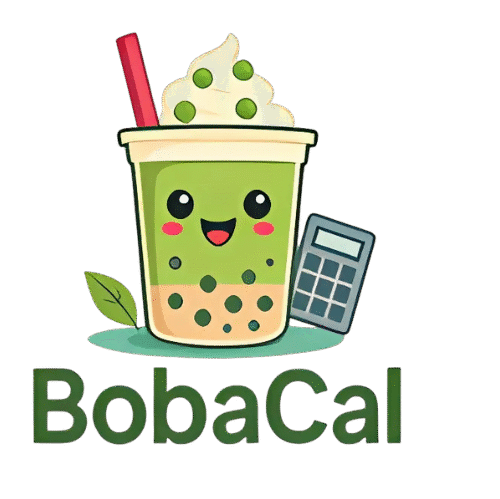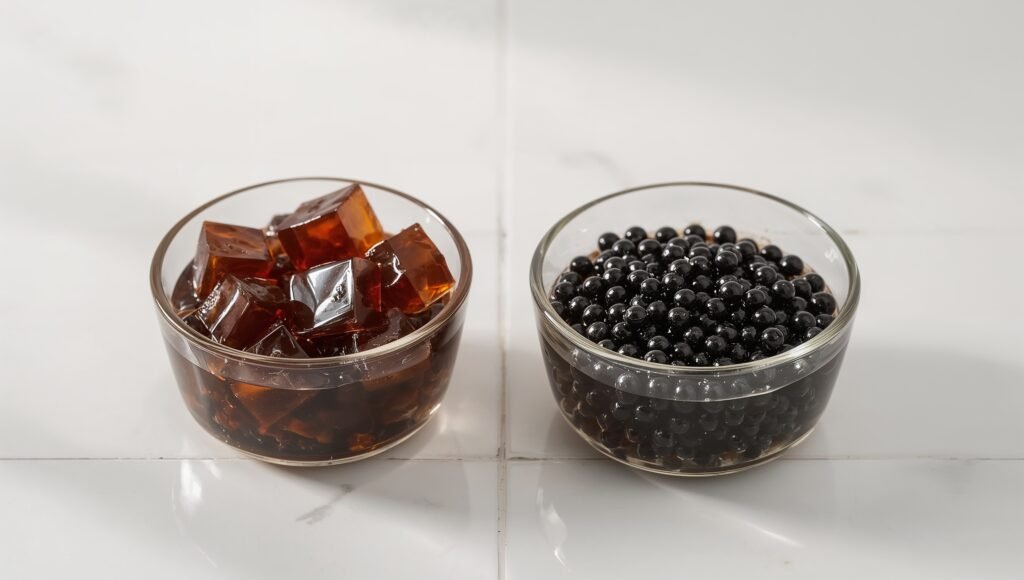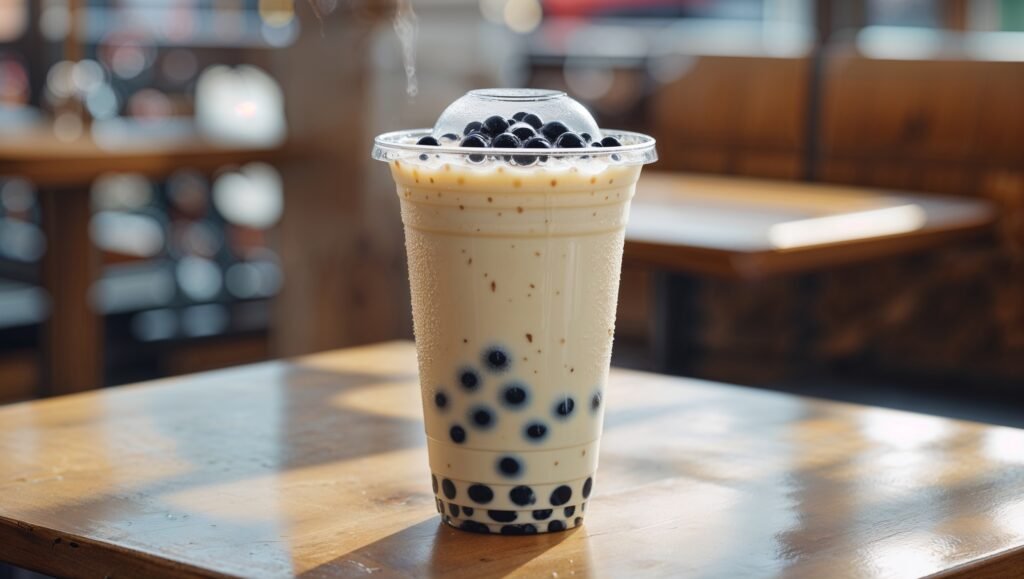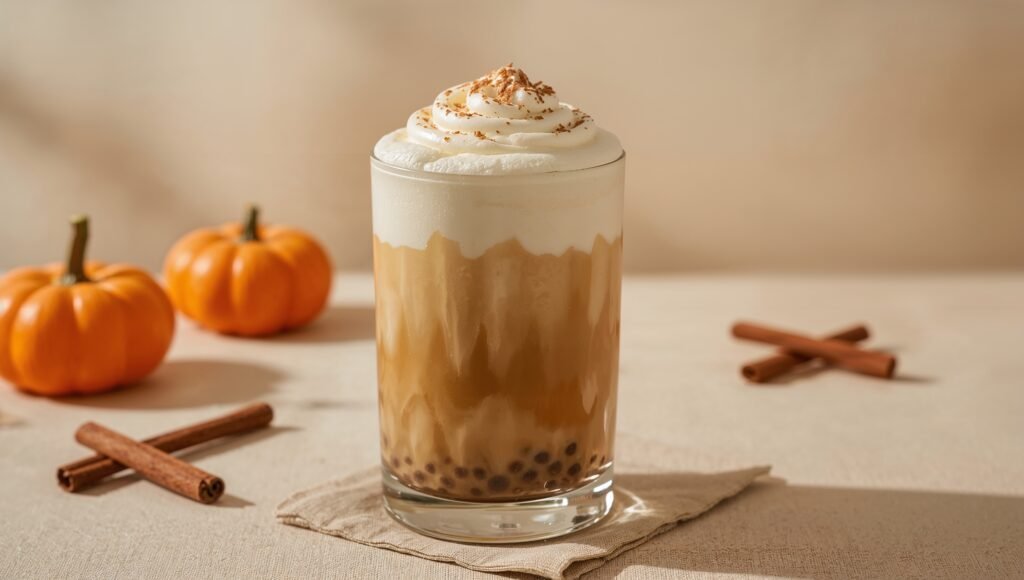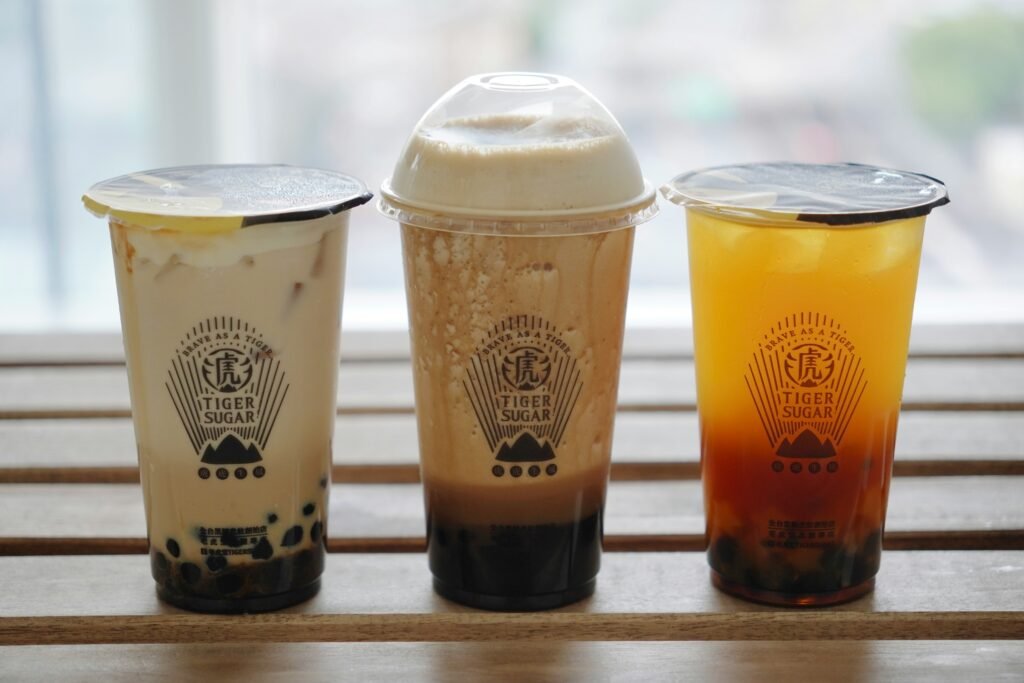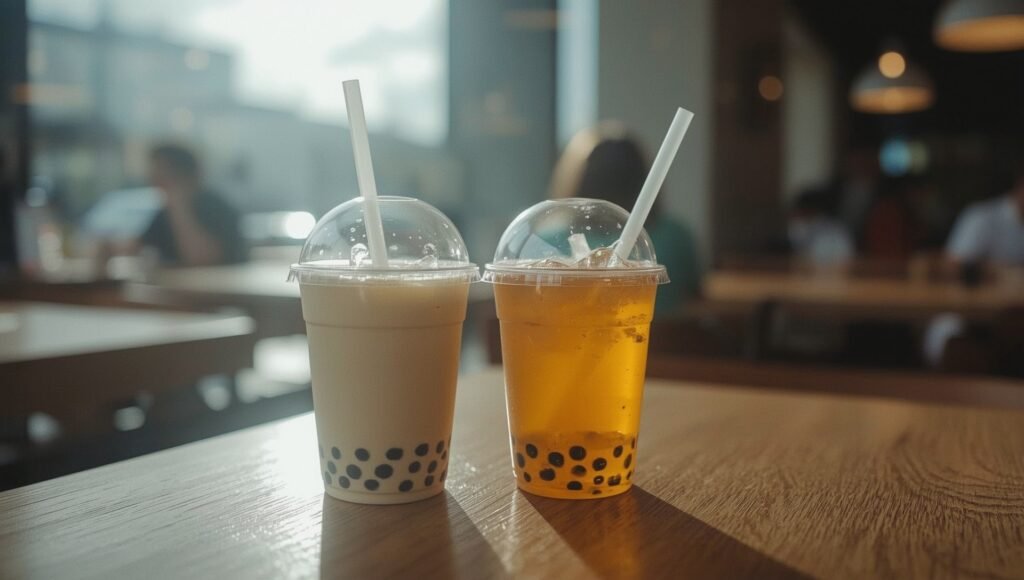Gong Cha Calories & Nutrition Guide: Low-Sugar Orders That Still Taste Great
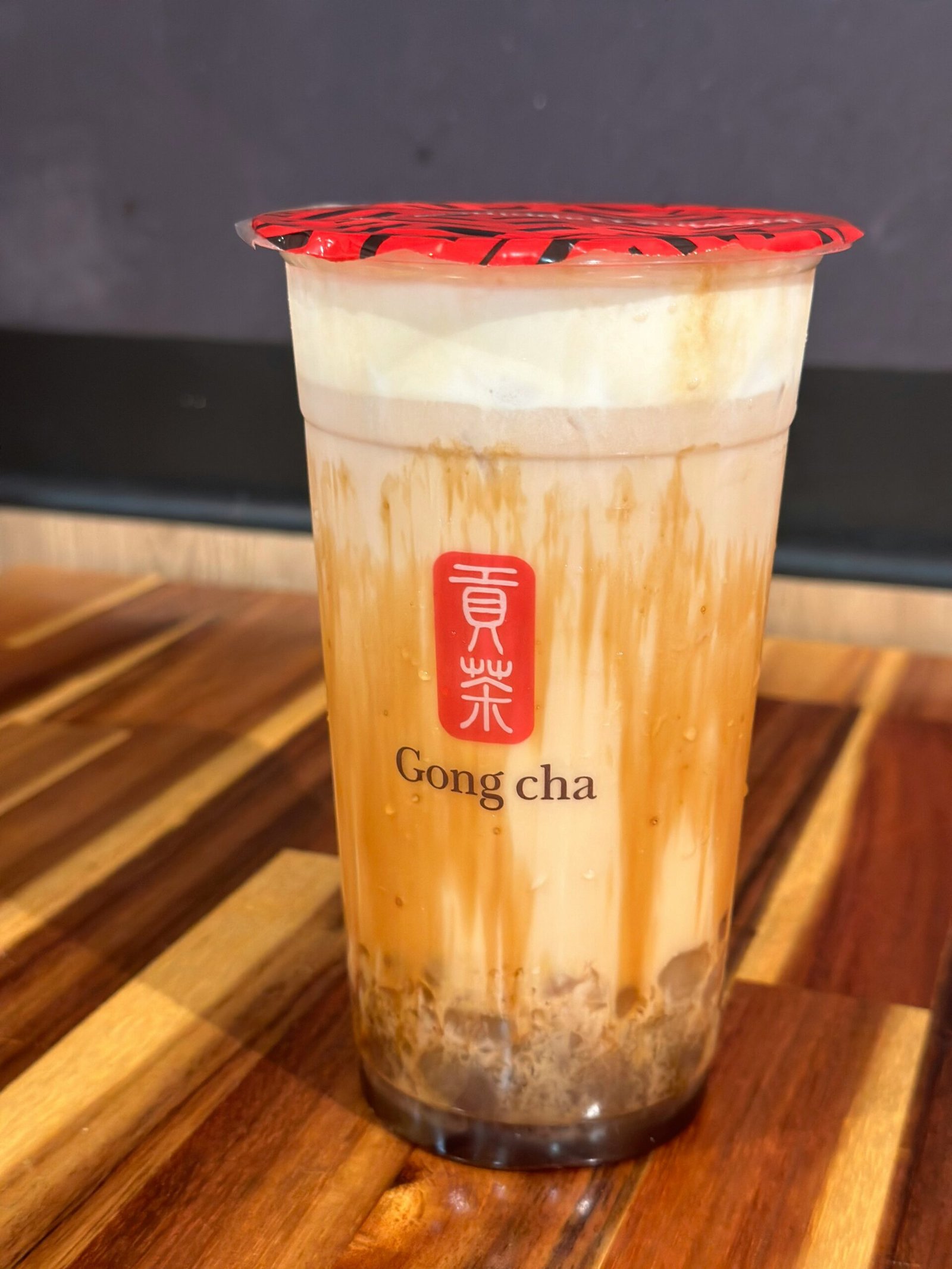
The calories from Gong Cha’s drinks can vary quite wildly based on size, sugar level, and a host of other things like the milk and toppings. If you love the Gong Cha brand but want to make smarter choices when ordering, this guide offers a deep dive into Gong Cha nutrition in layman’s terms.
Gong Cha calories can feel like hidden fees—one minute you’re craving a sweet sip, the next you’re impulse-Googling whether milk foam counts as a meal. This guide breaks down how sugar level, milk choice, toppings, and size drive the numbers so you can order with confidence (and still enjoy it).
You will learn how the different percentages of sugar actually change the drink, which kind of milk and tea bases that are lighter, which toppings carry the most calories, and the potential of creating lower-calorie versions of fan favorites.
If you’re looking for a wider span of info on bubble tea nutrition, you can scope out our Bubble Tea Calories & Macros guide and Is Bubble Tea Healthy? and utilize the free BobaCal calculator to compare any drink side by side.
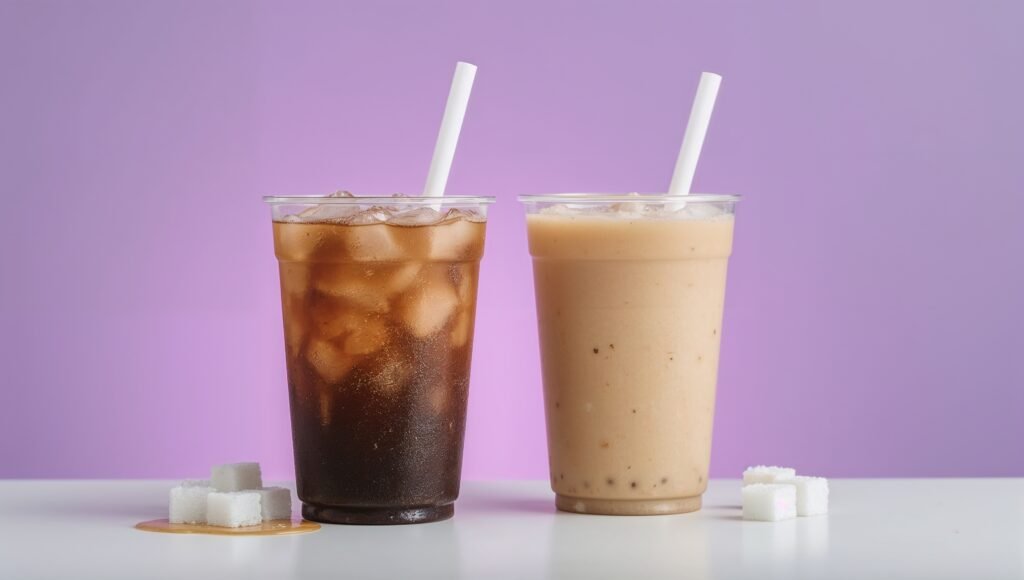
Why calories from Gong Cha are important
Bubble tea seems so customizable because it is—everything you customize, unfortunately adds calories. A medium milk tea at 100% sugar with pearls is very different from the same drink at 30% sugar with grass jelly.
This difference matters if you’re someday trying to watch your intake, optimize your macros, or simply avoid a crash in the afternoon after drinking something sugary. Gong Cha has a particularly wide menu: several tea bases, creamer either dairy or non-dairy, fruit teas, their famous milk foam “cream cap,” toppings, and more.
Knowing Gong Cha nutrition allows you to order exactly what you want—flavor, texture, caffeine—and leave off all the possible extras you may not want.
General ordering tips (cheat sheet)
Default sugar
30–50% sugar for most milk teas; 0–30% for brewed teas and citrus drinks.
quick winPick one “heavy” max
Choose either pearls or foam or high-sugar syrup — not all three.
one-heavy ruleLighter toppings
Grass/herbal/ai-yu jellies, aloe, or ½ scoop pearls. Ask to skip brown-sugar drizzle on the cup.
topping swapMilk choices
Fresh 2%/low-fat is a solid default. For non-dairy, almond/coconut are usually lighter than barista oat.
milk swapSize & ice
Go Small/Medium. Regular ice keeps portion in check; “less ice” often means more drink.
portion controlFlavor fit
Herbal/green/oolong bases shine with lower sugar. Taro & brown sugar are naturally richer — treat items.
match the baseGong Cha sugar levels
Generally, things that make Gong Cha sugar levels available in steps are 0%, 30%, 50%, 70%, and 100%, with minor regional differences. These percentages are not referring to “% of total calories”, they reflect “how much of the standard sweetener syrup goes into the cup”.
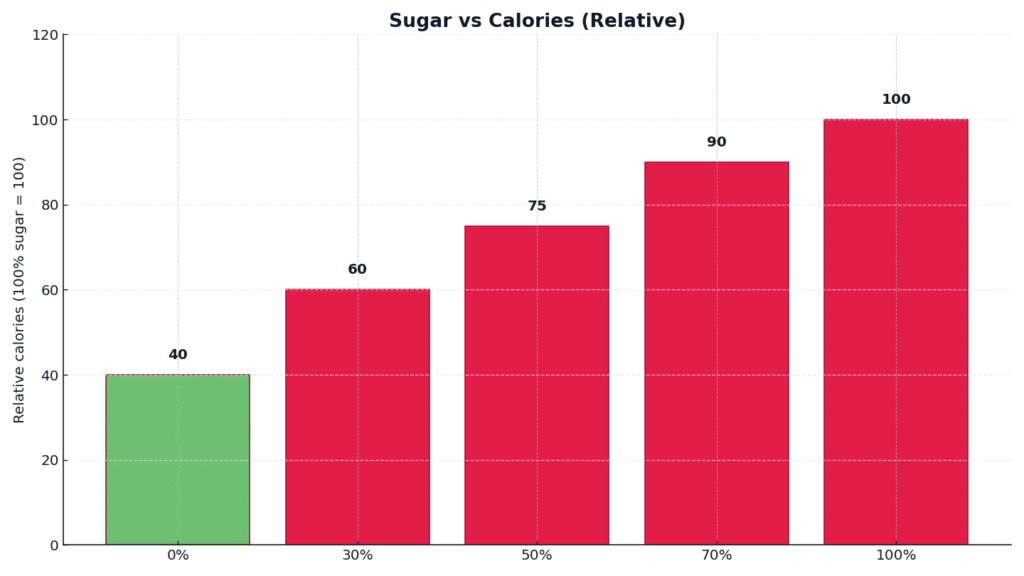
At 100% you are getting the full default sweetness level that the recipe was designed for. At 50%, you are getting 50% of that syrup; if you are at 30%, that is a little less than 1/3 of the syrup. Because syrup contributes most of the carbohydrate in any sweetened teas, just by going from 100% to 30-50% you can substantially drop calories in that drink before you even touch the toppings.
A good general rule is, if you like fruity flavors, for fruit teas with 30-50% sugar will taste bright but balanced; for milk teas, the most people I know liked it at 50% for the first time and then played with going down. Make it lighter, not boring. Lower the sugar and keep the Gong Cha you love
Here’s how sugar level affects relative calories at Gong Cha (100% sugar = 100):
Lowering sugar from 100% to 30–50% meaningfully reduces calories before toppings.
Learn more: key calorie & sugar facts
Milk, creamers and tea bases
Not all milk teas are created equal:
Fresh milk, especially low-fat or lactose free adds creaminess and protein, not to mention it can help with satiety. If you carefully track macros, asking for fresh milk or “lighter” milk option is an easy way of making Gong Cha nutritional values more well rounded.
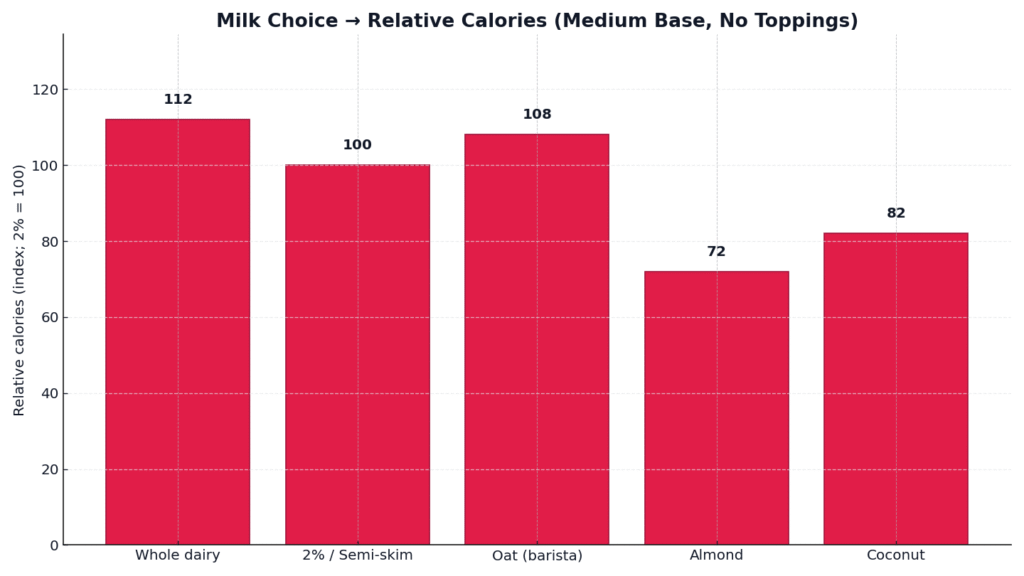
Tea choice matters too. Black teas or oolong teas are bolder teas, and hold up better to lower sugar levels. Green teas taste clean and can trick your palate into perceiving 30–50% sugar as sweeter—handy for lowering calories without losing flavor.
Fruit teas typically start off as brewed tea but always have fruit syrup or puree; you can have lighter than milk teas if you stick to lower sugar levels and don’t include heavier toppings. A lesser known calorie saver is to “no shake” or “less syrup” if you are selecting a drink that has multiple flavored components; staff can usually modify the shake so you are not double sweetening.
🧋 Toppings: Fun… and Calorie-Dense
Toppings are the best part of boba—and the reason Gong Cha toppings can double a drink’s calories if you’re not careful.
Brown sugar pearls
Pearls in caramelized syrup—often the highest per scoop.
Regular pearls or ½ scoop
Skip the syrup marinade; reduce the portion to cut calories.
Tapioca pearls
Classic chew but dense for the serving size.
Crystal boba (konjac)
Konjac “crystal” pearls keep the chew with a lighter impact.
Milk foam / crema
Sweet, fatty cap; adds up quickly.
“Light” foam or skip
Ask for a thin layer—or go without to save the cap calories.
Pudding
Creamy and sweet; heavier than jellies.
Grass / herbal jelly
Silky, subtly bitter—among the lightest options including Ai-yu jelly.
If there is only one thing to memorize about Gong Cha, remember this: pearls/cream caps are heavy and jellies/crystal boba/aloe are light. Mixing one heavy and one light topping can still give you texture while keeping the Gong Cha nutrition in line.
How to lighten popular Gong Cha beverages.
Wintermelon Milk Tea 30–50% sugar
- Keep flavor: wintermelon stays sweet even at lower sugar.
- Milk: fresh low-fat/2% milk.
- Topping: grass jelly.
Taro Milk Tea 30–50% sugar
- Note: taro is naturally starchy/sweet.
- Milk: fresh milk (if available).
- Swap: crystal boba; ask for “less taro.”
Milk Foam Green Tea ≈30% sugar
- Cap: skip the cream cap or ask for “light foam.”
- Toppings: none (keep it simple).
Brown Sugar Milk treat item
- Built-in heavy: brown sugar syrup + pearls.
- Lighter order: “light pearls” + “light brown sugar,” add extra milk/ice.
- Alt pivot: black milk tea + crystal boba at 30–50% sugar.
Earl Grey Milk Tea 30–50% sugar
- Milk: fresh milk.
- Topping: herbal jelly (pairs with citrusy Earl Grey).
Passionfruit Green Tea 30–50% sugar
- No milk.
- Swap: aloe or coconut jelly instead of pearls.
📏 Size Still Matters (More Than You Think)
With Gong Cha, size is more significant than any other consideration regarding calories as most things can be adjusted according to size: for example, tea, milk, sweetener, and sometimes toppings.
If you want the feel of a large without the calories, choose a regular with light ice, or ask for no topping, extra tea when possible. Many customers find that a smaller cup at a lower sugar level was more pleasant and tea-forward.
Macro-friendly ordering tips
If you track macros, the aim is usually to reduce empty sugars, moderate fat, and add a bit of protein for satiety. At many Gong Cha locations you will be able to request fresh milk for milk teas, as low-fat dairy contains some protein content compared to non-dairy creamers!
As an example of a macro-friendly order you can do: black milk tea, 30-50% sugar, fresh low-fat milk, and grass jelly. You can also order brewed oolong tea with a dash of milk and no toppings—very low calories, a bit of protein from the milk, and aromatic tea base to drink.
Sample orders to try (light, balanced, treat-but-lighter)
Light & classic: Black Milk Tea
30% sugarBuild: fresh low-fat milk, grass jelly. Creamy without being heavy, one of the most straightforward ways to reduce Gong Cha calories.
Fruity & refreshing: Passionfruit Green Tea
30% sugarBuild: no milk, aloe. Crisp and juicy; typically lower than most milk teas.
Dessert-leaning but lighter: Taro Milk Tea
50% sugarBuild: fresh milk, crystal boba, light ice. Keeps the taro creaminess while reducing starch from pearls.
Foam fix but with restraint: Milk Foam Oolong Tea
30% sugarBuild: ask for light foam, no extra toppings. Signature cap, fewer calories.
Brown sugar compromise: Brown Sugar Milk Tea
treat-but-lighterBuild: 30–50% sugar, light pearls, extra milk, light brown-sugar drizzle. Cuts syrup + pearls vs. the standard.
Simple & very light: Brewed Alishan Green Tea
0–30% sugarBuild: no toppings, light ice. Perfect daily drink or coffee-break swap.
Sweet-tooth fruit tea: Mango Green Tea
30–50% sugarBuild: coconut jelly. Juicy texture with lighter calories than pearls.
Comfort pick: Wintermelon Milk Tea
30% sugarBuild: fresh low-fat milk, half grass jelly + half crystal boba. Balanced sweetness + chew with lighter toppings.
Coffee lovers: Coffee Milk Tea (where available)
30–50% sugarBuild: fresh milk, no toppings. Coffee aroma lets lower sugar still taste bold.
Tea purist: Oolong Tea with a splash of milk
0–30% sugarBuild: splash of milk, no toppings. Minimal calories, max aroma.
Taste training: reducing sugar
If you normally have 100% sweetness, it can leave you feeling a bit sour to drop to 0% sugar overnight. Instead, scale down in a phased approach over multiple orders: 70% → 50% → 30%. Your palate will reset faster than you can imagine and you are likely to uncover new flavor notes of the tea previously masked by syrup. This singular change in habit is the most straightforward way to reduce Gong Cha calories and not feel “dieting” about it.
How to think about “healthy” at Gong Cha
The definition of “healthy” is subjective based on your intentions. If calories are your driving force, the obvious control are size, sweetness level, and toppings. If you’re concerned about macros, opt for whole milk (as opposed to powdered creamer) and moderate foam and pearls/lynchee.
If your objective is energy and focus, along with speed of delivery, choose brewed teas without toppings or low sugar. What matters most is that the drink fits the day: light and tea-forward for everyday sips; richer and sweeter for planned treats.
If you want to read more about sugar, sweetness perception, and portion control see Bubble Tea Nutrition: 7 Key Facts on Calories & Sugar.
Frequent mistakes that raise Gong Cha calories
Frequent mistakes that raise Gong Cha calories
Stacking indulgences
Pearls + foam + full sugar in one cup.
Assuming oat is always lighter
Barista/oil-added oat can be higher-calorie than dairy.
“Less ice” by default
Often increases drink volume → more calories.
Extra brown-sugar drizzle / fruit jam
Hidden syrup on the cup or mix-ins bumps sugar fast.
Supersizing out of habit
Large adds calories without more satisfaction.
Two heavy toppings together
Pearls + pudding (or foam) turns the drink into dessert.
Note: Recipes vary by location. Use these as relative guides and adjust to your taste.
When to just enjoy the treat
Sometimes the best choice for your health goal is the classic version and then move on. If you are a sucker for Brown Sugar Pearl Milk, then just plan for it, keep the rest of the day balanced and enjoy it. Sustainably, is about being flexible over perfection. The benefit of learning about Gong Cha nutrition is that you control the default – and so when you have a splurge is purposeful.
Read next: Kung Fu Tea Calories & Macros (2025) — healthier orders by size, sugar & toppingsWhat is the lowest calorie drink at Gong Cha?
The lowest option is typically plain brewed tea with 0% sugar and no toppings. If you want to chew something, you could add an aloe or light jelly and keep the sugar at 0-30%. This would still be Gong Cha calories very low, but you still get that ‘boba’ order.
Does 0% sugar mean zero calories?
No. Milk tea has calories from milk or creamer, and toppings have calories as well. 0% sugar cuts syrup calories, but not everything. This is why brewed teas are the lightest base with no toppings.
What topping is lighter than tapioca pearls?
Crystal boba, grass jelly, herbal jelly, and aloe tend to be lighter than pearls. If you’re looking for some chew, try crystal boba! To save on calories, get a jelly topping and get it as a “light” topping taken by itself.
Are milk teas or fruit teas served with less calories?
Fruit teas are generally lighter options when ordered to 30-50% sugar and no toppings. Milk teas generally have calories from milk or creamers—even with 0% sugar milk, still adds calories, even if not sweetened. If you want that creamy mouth feel, consider ordering fresh low-fat milk (if it’s available) instead of creamers, and skip foam.
What size should I get if I am tracking calories?
Regular/small. Size is currently the easiest way to go Gong Cha on calories because is more component based rather than large amounts. Especially if regularly ordering large, sub regular with light ice (for the same amount of sipping time, while saving calories).
How do I go lower Gong Cha milk tea calories without losing creaminess?
Call and ask for fresh low-fat milk (when available), ask for 30-50% sugar, order a light topping (grass jelly) so that you are still tasting and feeling the mouth feel while reducing useless calories at about the same time.
Is the cream cap always a cost?
Of course not. It is just calorically dense for the volume you are improving. If you really enjoy it, order a “light foam” on the cap, keep sugar at 30%, and skip pearls. You will still have the sweet-salty goodness with meaningfully fewer total calories.
Can I get half toppings?
Yes. Most shops will split portions, or you can split toppings (half crystal boba and half grass jelly). This is an easy way to cut down on Gong Cha topping calories, and still be able to enjoy, and have variety.
What is the best place to begin with if I am new to cutting sugar?
Try ordering your drink at 50% sugar first, and in the future order at 30% sugar. There are countless people that found 30% was the right taste level for them when using black tea or oolong, and added milk, since these teas don’t mask the tea quite as much.
Are there any “sneaky” adds I should know about?
Some of the specialty drinks have flavored milk, sauces, or layers of syrup. If you are doing your best to keep low calorie, stick with just one sweet component and ask for “light” on the syrups or pearls.
Putting it all together
The best Gong Cha order for you is your Gong Cha order for the day. If you want near 0 Gong Cha calories, order brewed tea (0-30% sugar) with aloe gel, or herbal jelly (jelly are likely low calories than pearls).
If it is chilly and you want comfort food, go for a milk tea – 30 – 50% sugar, fresh low-fat milk with a jelly topping instead of pearls.
And if you want to plan for and eat a “treat” one, stick with the classic, but order small and maybe light pearls, to give yourself some flexibility and sustainable means of treating yourself.
Next steps
Play with the free BobaCal calculator to look at comparing your favorite drinks, and how small changes regarding sugar level, milk choice or toppings shift Gong Cha nutrition data in less than a minute. For more involved context read the Bubble Tea Calories & Macros article and switch over to our 7 Key Facts on Calories & Sugar article for longer read – and if you enjoy comparing these chain stores, read our Kung Fu Tea calories article. The more you know how the numbers roll up, the easier it is ordering a cup that tastes good and at least makes sense for what you want to achieve.
Explore More Bubble Tea Chains
Tap a card to open the full Calories & Nutrition Guide.
